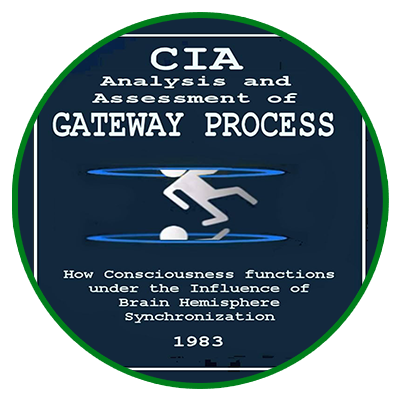
This study presents a detailed historical and financial analysis of the impact of tariff policy on the economy of the United States. Drawing lessons from the past, starting in 1930, and drawing parallels with events of 2025, the material reveals the deep mechanisms through which protectionist measures affect the domestic market, international trade, and economic stability. This work is intended to provide a comprehensive understanding of the dangers associated with repeating the mistakes of the past.
History is not just a story of past events, but a mirror reflecting the patterns of human decisions. America has already faced the consequences of protectionism, and each time they led to downturns, unemployment, and declines in prosperity. Today, as tariff policy once again becomes a tool of economic strategy, it is essential to recall these lessons.
To better understand the impact of tariff policy on the U.S. and the global economy, let us review key historical events and modern parallels, starting with the Great Depression and leading up to the actions of the Trump administration in 2025.
FULL SECTION: HISTORY OF TARIFFS, THEIR IMPACT ON THE U.S. ECONOMY, AND THE CURRENT SITUATION WITH TRUMP IN 2025
OUTLINED CONTENTS:
• Ronald Reagan’s Position on Tariffs
• The Smoot-Hawley Tariff Act of 1930: What Happened
• Consequences of the Smoot-Hawley Act
• Trump’s Tariffs in 2025
• Similarities Between 1930 and 2025
• Assessments by Economists and Official Organizations
• Reaction of the Global Economy
• Historical Analogies
• Scenario for 2025–2026
• Sectors at Special Risk
• International Consequences
• Historical Lessons
• Other Similar Situations in U.S. History and Their Outcomes
• Impact on Stock Markets
• Long-Term Macroeconomic Trends
• Political Consequences Within the U.S.
RONALD REAGAN’S POSITION ON TARIFFS
Ronald Reagan, the 40th President of the United States, was a staunch advocate of free trade. In his speeches, often reading from a script, he emphasized that tariffs are hidden taxes on consumers and that, in the long run, they harm the very workers and farmers they are intended to protect.
Reagan particularly highlighted the mistakes of 1930, when the imposition of high tariffs deepened the Great Depression. He stated:
“In 1930, in an effort to protect workers and farmers, tariffs were introduced. As a result, we experienced the greatest economic collapse. We must not repeat these mistakes.”
THE SMOOT-HAWLEY TARIFF ACT OF 1930: WHAT HAPPENED
The Smoot-Hawley Tariff Act was passed in 1930 and sharply raised tariffs on more than 20,000 items. The main impact was on agricultural products, industrial goods, and raw materials. Tariffs increased by 20% to 60%, depending on the category.
CONSEQUENCES OF THE SMOOT-HAWLEY ACT
The introduction of tariffs triggered a destructive chain reaction: • First, it hit agriculture: importing countries retaliated with their own tariffs, cutting American farmers off from foreign markets. Grain and cotton prices collapsed, and hundreds of thousands of farmers went bankrupt.
• Then came the industrial crisis: automakers, steelmakers, and textile companies lost foreign orders and began mass layoffs.
• The banking system collapsed following industry: a wave of bankruptcies engulfed more than 9,000 banks.
• Real estate and retail followed: demand for housing and consumer goods plummeted catastrophically.
The outcome was: • Unemployment rose to 25%;
• U.S. GDP fell by 30%;
• Global trade contracted by 66%;
• The Great Depression lasted for almost the entire decade of the 1930s.
TRUMP’S TARIFFS IN 2025
In 2025, Donald Trump’s administration implemented an aggressive tariff policy, imposing duties ranging from 10% to 60% on imports from China, the European Union, Canada, Mexico, India, and Vietnam. Strategic sectors — semiconductors, the automotive industry, agriculture, and home appliances — were hit hardest.
This move triggered immediate retaliatory actions from partner countries, increasing pressure on American manufacturers and consumers.
SIMILARITIES BETWEEN 1930 AND 2025
Historical parallels between the 1930s crisis and the current situation are evident. In both cases, the abrupt imposition of tariffs led to a chain reaction of retaliatory measures by trade partners. As a result, U.S. exports suffered, domestic prices rose, and pressure intensified on the agricultural and industrial sectors.
Financial markets reacted with declines, and consumer activity fell. As in the 1930s, there are rising risks of a deepening recession and the breakdown of international economic ties.
SECTORS UNDER SPECIAL THREAT
The sectors most at risk in the context of tariff escalation are:
• Agriculture: decline in export deliveries and rise in production costs;
• Automotive industry: increase in component prices and decrease in sales;
• Electronics industry: shortage of components and rising production costs;
• Construction sector: increased material costs and reduced housing demand;
• Retail trade: higher prices and declining consumer demand.
INTERNATIONAL CONSEQUENCES
Trade wars lead to a slowdown in global trade, reduced investment, and rising geopolitical tensions. The strengthening of protectionist measures disrupts global supply chains, redistributes trade flows, and fosters the creation of new economic alliances without U.S. participation.
Additionally, the U.S. dollar faces the threat of a gradual erosion of its status as the world’s primary reserve currency amid the growth of alternative currency blocs.
HISTORICAL LESSONS
Historical experience shows that protectionism consistently leads to economic losses. After a short-term boost in certain industries, structural degradation of the economy, a decline in living standards, and a reduction in political influence on the global stage typically follow.
Only the development of an open and balanced trade policy can ensure the United States’ long-term prosperity and stability.
As in 1930, the large-scale imposition of tariffs in 2025 was met with retaliatory measures from partner countries. This created a threat to American exports, caused domestic price increases, and put pressure on the industrial and agricultural sectors. In both cases, economic consequences manifested swiftly and on a large scale.
ASSESSMENT BY ECONOMISTS AND OFFICIAL ORGANIZATIONS
Economists from the Federal Reserve, along with analysts from major banks such as JPMorgan, warn of a high likelihood of recession, increased inflation, and reduced economic growth as a result of the 2025 tariff policies.
REACTION OF THE GLOBAL ECONOMY
The introduction of tariffs in 2025 triggered a significant wave of negative consequences for the global economy.
The fall of stock indices — including a significant drop in the Dow Jones, S&P 500, and Nasdaq — reflected deteriorating investor sentiment and growing concerns over the slowdown in global trade.
The rise in prices for commodities such as oil, steel, and food products sparked a new wave of global inflation. Increased production costs impacted supply chains worldwide, with particularly severe effects on emerging economies.
The disruption of global supply chains intensified instability in sectors like electronics, automotive manufacturing, agriculture, and construction. Many international companies were forced to revise their logistics and investment strategies.
Furthermore, there was an accelerated redistribution of trade flows as countries sought new sales and supply routes bypassing the United States, further advancing the regionalization of the global economy.
All of these factors contributed to the slowdown of global growth rates and an increase in geopolitical tensions.
HISTORICAL ANALOGIES
U.S. history shows a clear pattern: each major episode of protectionist policy resulted in serious negative consequences for both the domestic economy and the global trading system:
• The introduction of tariffs during the 1930s under the Smoot-Hawley Act intensified and prolonged the Great Depression, causing mass bankruptcies among farmers, industrial decline, and the collapse of the banking system.
• Protectionist measures during the “Nixon Shock” in 1971 ended the gold standard, undermined confidence in the U.S. dollar, and triggered global inflation.
• The U.S. trade war with Japan in the 1980s temporarily supported American automakers but led to the strengthening of Japan’s technological prowess and the U.S. losing leadership in key industries.
• The 2018–2019 trade war with China led to higher prices for American consumers, decreased competitiveness of American farmers, and accelerated diversification of global trade away from the U.S.
Each case confirms: short-term gains from tariffs are inevitably followed by long-term economic losses, market disruptions, and a decline in U.S. global influence.
SCENARIO FOR 2025–2026
Analysis of current economic data and historical analogies suggests the following sequence of events for 2025–2026:
• Initial wave of inflation: rising prices for imported goods due to tariffs, directly affecting household purchasing power;
• Decline in export volume: retaliatory tariffs from other countries leading to loss of markets for American producers;
• Pressure on the manufacturing sector: higher costs, reduced profits, and a decrease in investments in new projects;
• Rising unemployment: job losses in the most affected sectors — agriculture, manufacturing, and construction;
• Increased social tensions: deterioration of living standards among broad segments of the population and rising dissatisfaction with government policies;
• Strengthening recessionary trends: GDP contraction, slowdown of economic growth, and weakening of stock markets;
• A potential wave of bankruptcies among small and medium-sized businesses.
This scenario largely mirrors the dynamics of past crises, where protectionist policies led to deep economic shocks.
SECTORS UNDER SPECIAL THREAT
The sectors most at risk are agriculture, automotive manufacturing, electronics production, construction, and retail trade.
INTERNATIONAL CONSEQUENCES
Global trade faces the threat of a slowdown, and the U.S. dollar risks losing part of its position as the world’s primary reserve currency.
HISTORICAL LESSONS
History consistently shows that protectionism leads to deteriorating economic conditions, reduced trade, rising prices, and a declining standard of living for the population.
OTHER SIMILAR SITUATIONS IN U.S. HISTORY AND THEIR CONSEQUENCES
In addition to the crisis of the 1930s, there were other instances of protectionist policies in U.S. history that significantly affected both domestic and global economies:
• 1971 — “Nixon Shock”: President Richard Nixon imposed a 10% tariff on all imports as part of his “New Economic Policy.” This decision aimed to address the trade balance deficit. The result was rising inflation, a weakening dollar, and the collapse of the Bretton Woods fixed exchange rate system.
• 1981–1985 — Trade war with Japan: The U.S. achieved restrictions on Japanese automobile exports. While this temporarily protected American automakers, it led to higher car prices and deteriorated relations with Japan.
• 2018–2019 — U.S.-China Trade War during Donald Trump’s first term: The imposed tariffs resulted in reduced trade turnover between the two countries, increased goods prices in the U.S., decreased farmers’ incomes, and a slowdown in economic growth in both the U.S. and China.
Each case demonstrates that short-term protectionist gains inevitably lead to long-term structural problems both domestically and in the global economy. Repeating such mistakes could cost entire generations dearly.
ADDITIONAL DETAILS:
• How the world’s monetary systems collapsed after the Nixon Shock:
Prior to 1971, the Bretton Woods system tied currencies to the U.S. dollar, and the dollar to gold. After the U.S. unilaterally abandoned the gold standard in 1971, exchange rates became floating. This led to a sharp rise in global inflation, currency market instability, increased currency speculation, and significant financial crises in several countries.
• What happened in the long term after the trade war with Japan:
Japanese companies, in order to circumvent U.S. tariffs, moved production to the United States. This strengthened Japan’s technological dominance and allowed it to become a world leader in electronics and automobile manufacturing. Meanwhile, the U.S. lost its dominant positions in these sectors, and trade imbalances remained unresolved.
• How the 2018–2019 U.S.-China trade war affected global markets and China’s strategy:
China accelerated the development of its domestic market and technologies, reduced reliance on U.S. imports, and more actively promoted the “Belt and Road” initiative, enhancing cooperation with other Asian, European, and African countries. This initiated a gradual reformatting of global trade architecture without U.S. dominance.
• Consequences of the Nixon Shock (1971):
The imposition of a 10% import tariff was accompanied by the U.S.’s unilateral withdrawal from the gold standard, ending the Bretton Woods system of fixed exchange rates. The result was global inflation, sharp exchange rate fluctuations, and increased instability in the world financial system. The U.S. temporarily improved its trade balance, but at the cost of global monetary instability.
• Long-term consequences of the trade war with Japan (1981–1985):
After restrictions on Japanese automobile exports, Japanese companies began relocating production to the U.S. This led to the opening of new factories in America but also strengthened Japan’s technological superiority in electronics and automotive manufacturing, ultimately resulting in the U.S. losing leadership positions in these industries.
• Impact of the U.S.-China trade war (2018–2019):
In the short term, the U.S. increased tax revenues from import tariffs, but the long-term consequences included higher consumer prices, reduced competitiveness of American farmers and manufacturers, and China’s strengthened efforts to diversify its economic ties and develop its domestic market. This accelerated the process of de-Americanizing global trade.
IMPACT ON STOCK MARKETS
After the introduction of tariffs in various historical periods, U.S. stock markets typically reacted with declines:
• In the 1930s, following the Smoot-Hawley Act, the Dow Jones Industrial Average fell by more than 80% over several years.
• During the Nixon Shock of 1971, the Dow Jones and S&P 500 exhibited high volatility and remained under pressure for the next two years due to inflationary expectations.
• During the U.S.-China trade war in 2018–2019, stock markets experienced several waves of sell-offs, with the Dow Jones losing about 13% by the end of 2018.
The sectors most affected during these periods were: • The industrial sector;
• Agriculture;
• The automotive industry;
• The technology sector.
LONG-TERM MACROECONOMIC TRENDS
Trade wars have contributed to the growth of the U.S. federal budget deficit. Spending on supporting affected industries (for example, aid to farmers after 2018) increased government expenditures. U.S. national debt consistently rose after each major episode of protectionist policy.
On a global scale, the pace of world economic growth slowed down. After 1930, during the 1970s, and again following 2018, global trade contracted, impacting the overall level of economic activity worldwide.
POLITICAL CONSEQUENCES WITHIN THE UNITED STATES
Trade wars have invariably influenced the political landscape within the country. After the “Nixon Shock,” trust in the federal government sharply declined, further exacerbated by the subsequent Watergate scandal.
Each wave of protectionism contributed to the rise of political movements advocating for trade liberalization and economic integration. These movements gained particular strength following the economic hardships of the 1930s and after the U.S.-China trade war in the late 2010s.
GLOBAL CONCLUSION
Analyzing historical examples of tariff policy clearly shows that short-term protection of domestic industries through tariffs has almost always led to long-term negative consequences.
The Smoot-Hawley Act became a catalyst for the Great Depression; the Nixon Shock destroyed the international monetary system and fueled global inflation; and the trade wars with Japan and China reshaped global production chains, weakening U.S. positions in world markets.
The current tariff policies of 2025 are repeating the same mistakes.
Already visible are the negative effects: stock market declines, rising prices, slowing trade, and increased tensions in international relations.
History teaches us that protectionism harms not only the domestic economy but also global stability.
The only path to prosperity lies in supporting fair international trade, strengthening alliances, and integrating into the global economy.
Only by understanding the lessons of the past and rejecting isolationist policies can the United States maintain leadership, ensure sustainable growth, and pass prosperity on to future generations.


